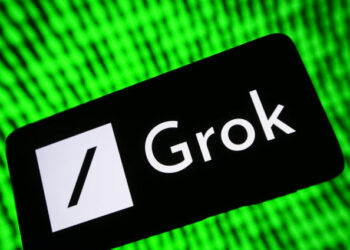In today’s digital age, advertising has evolved significantly, with search engine marketing (SEM) and social media marketing (SMM) playing crucial roles. As businesses strive to reach their target audience effectively, the intersection of SEM and SMM emerges as a powerful strategy. This article delves into the future of advertising, exploring how SEM and SMM are converging to create innovative and effective campaigns. By understanding this intersection, marketers can stay ahead of the curve and harness the full potential of these advertising channels to achieve their marketing goals.
1. Understanding SEM and SMM
SEM: Search engine marketing involves promoting a website by increasing its visibility in search engine results pages (SERPs) through paid advertising. It includes techniques such as search engine optimization (SEO) and pay-per-click (PPC) advertising. SEM allows businesses to target specific keywords and reach users actively searching for relevant products or services.
SMM: Social media marketing focuses on leveraging social media platforms to engage with users and promote brands, products, or services. It involves activities like creating compelling content, managing online communities, and running targeted ad campaigns. SMM enables businesses to build relationships with their target audience and generate brand awareness.
2. The Convergence of SEM and SMM
Cross-Platform Integration: As the advertising landscape evolves, the lines between SEM and SMM are blurring. Advertisers are increasingly integrating their SEM and SMM efforts to create cohesive campaigns. This integration allows for a consistent brand message across multiple platforms, maximizing reach and impact. For example, running SEM campaigns that target specific keywords alongside SMM campaigns that engage users on social media platforms like Facebook and Instagram can create a powerful advertising ecosystem.
Data-Driven Approach: Both SEM and SMM generate valuable data that can inform advertising strategies. By combining data from SEM and SMM campaigns, marketers can gain comprehensive insights into audience behavior, preferences, and trends. This data-driven approach enables more targeted and personalized advertising, resulting in higher conversion rates and return on investment (ROI).
Synergistic Content Creation: Content plays a pivotal role in both SEM and SMM. The convergence of these advertising channels allows marketers to create synergistic content strategies. For example, using insights from SMM campaigns, marketers can identify popular topics, trends, and user preferences. This information can then be utilized to optimize SEM campaigns by targeting keywords related to trending topics. Similarly, content that performs well on social media platforms can be repurposed for use in SEM campaigns, creating a consistent brand experience.
3. Emerging Trends and Innovations
Voice Search and AI: The rise of voice assistants and smart speakers has transformed the way people search for information. Marketers need to adapt their SEM and SMM strategies to account for voice search queries. Optimizing content for voice-based queries and leveraging AI-powered chatbots and virtual assistants can enhance customer experiences and drive conversions.
Influencer Marketing: Influencer marketing has gained immense popularity in recent years. By partnering with influential individuals on social media, businesses can tap into their engaged audiences and amplify brand reach. Integrating influencer marketing with SEM campaigns can lead to increased brand visibility and credibility.
Augmented Reality (AR) and Virtual Reality (VR): AR and VR technologies offer unique opportunities for immersive advertising experiences. Businesses can leverage these technologies to create interactive and engaging campaigns that allow users to visualize products or experience services before making a purchase. By combining SEM and SMM efforts, marketers can drive traffic to AR/VR experiences and boost conversions.
Conclusion
The future of advertising lies in the convergence of SEM and SMM. As these advertising channels continue to evolve, businesses must adapt to stay ahead. By integrating SEM and SMM, leveraging data-driven insights, and embracing emerging trends and innovations, marketers can create powerful campaigns that engage their target audience and drive results. The intersection of SEM and SMM presents endless opportunities for businesses to thrive in the digital landscape, effectively capturing attention, building brand awareness, and ultimately achieving their marketing objectives.
















